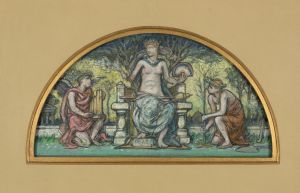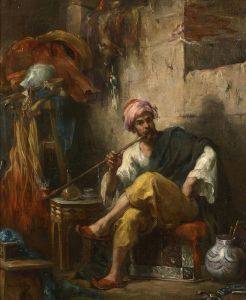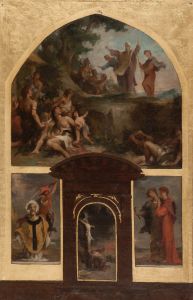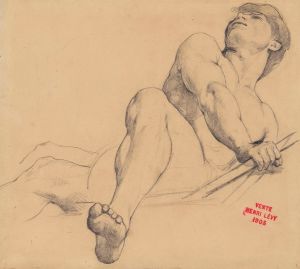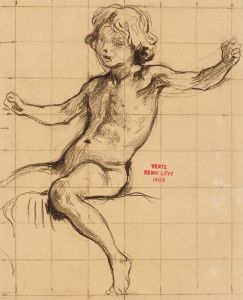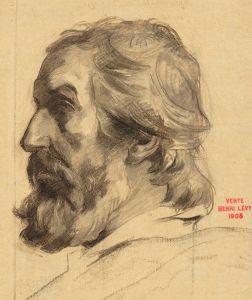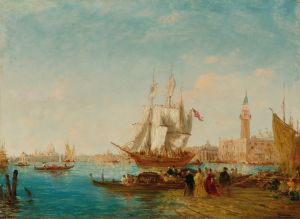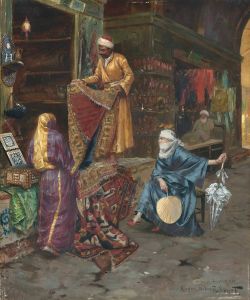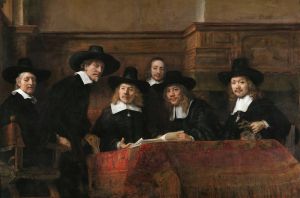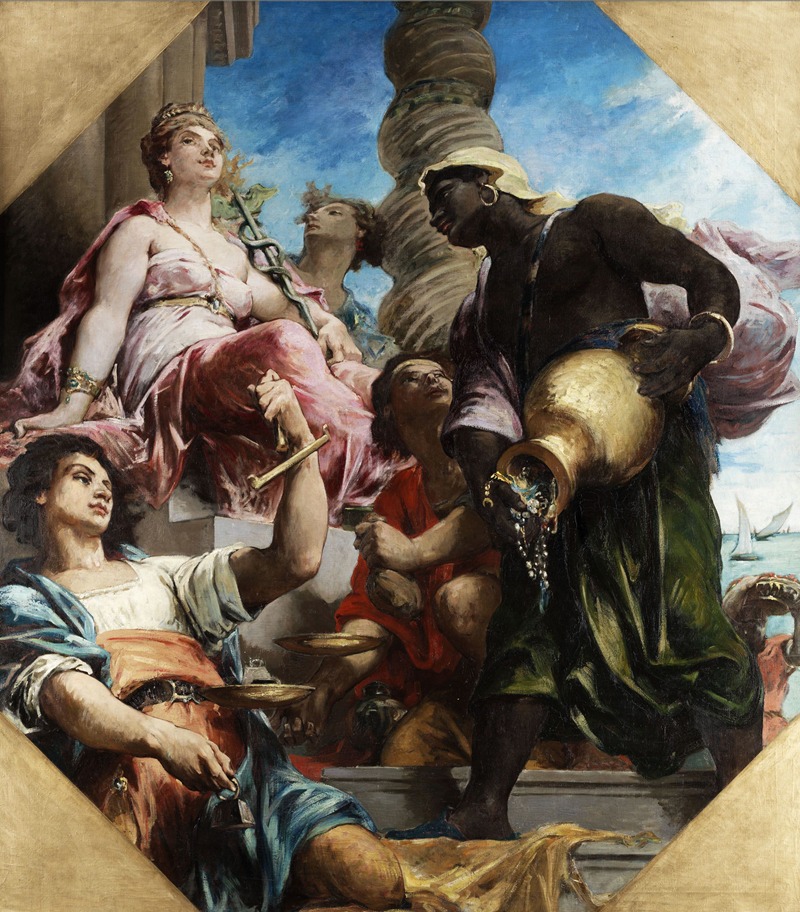
Allegorie des Handels
A hand-painted replica of Henri Leopold Lévy’s masterpiece Allegorie des Handels, meticulously crafted by professional artists to capture the true essence of the original. Each piece is created with museum-quality canvas and rare mineral pigments, carefully painted by experienced artists with delicate brushstrokes and rich, layered colors to perfectly recreate the texture of the original artwork. Unlike machine-printed reproductions, this hand-painted version brings the painting to life, infused with the artist’s emotions and skill in every stroke. Whether for personal collection or home decoration, it instantly elevates the artistic atmosphere of any space.
Henri Léopold Lévy (1840–1904) was a French painter known for his works in the academic style, often depicting allegorical, historical, and religious themes. One of his notable works, Allegorie des Handels (Allegory of Commerce), reflects his skill in creating symbolic and narrative-driven compositions. This painting is an allegorical representation of commerce, a theme commonly explored in 19th-century art to celebrate trade, industry, and economic progress.
The painting features a central figure personifying commerce, often depicted as a classical female figure, a common motif in allegorical art of the time. Surrounding her are various elements symbolizing trade and prosperity, such as ships, goods, or tools of industry, which were typical visual cues used to convey the theme of economic activity. Lévy's use of light, color, and detailed rendering emphasizes the grandeur and importance of commerce in society.
Allegorie des Handels was created during a period when France was experiencing significant industrial and economic growth, particularly during the Second Empire and the early Third Republic. Artworks of this nature were often commissioned to adorn public buildings, such as town halls, stock exchanges, or other institutions associated with trade and governance. They served both decorative and ideological purposes, promoting the values of progress, innovation, and the benefits of a thriving economy.
Lévy's work aligns with the academic tradition, which emphasized technical precision, historical or allegorical subject matter, and adherence to classical ideals. His training at the École des Beaux-Arts in Paris and his participation in the Paris Salon exhibitions contributed to his reputation as a skilled and respected artist of his time.
While specific details about the commission, location, or current status of Allegorie des Handels are not widely documented, the painting remains an example of Lévy's ability to merge artistic skill with thematic depth. It reflects the broader cultural and economic context of 19th-century France, where art often intersected with national pride and the celebration of progress.
Further research into archives or museum collections may provide additional information about the painting's provenance and historical significance.





